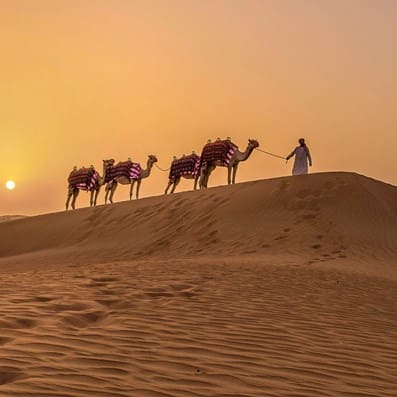Arts & Culture
10 things you might not know about Dubai
Fri, March 21, 2025
See a different side of Dubai with these lesser-known facts.
See a different side of Dubai with these lesser-known facts.

Welcome to a sun-soaked metropolis like no other
Discover nearby events, top attractions, restaurants and more
Join Real Madrid stars as they uncover Dubai’s top attractions
Every district in Dubai tells its own unique story
Admire the city's traditional arts, crafts and cultural gems
Plan your dream wedding in an unforgettable destination
Escape to the hills and explore nature
Answer the call of the wild and experience desert thrills
Uncover the city’s rich heritage and vibrant arts scene
Embark on thrilling new adventures for all ages
Taste award-winning world flavours and local cuisine
Visit the latest hotspots, openings and attractions
Find new surprises at modern malls and traditional souks
Marvel at record-breaking venues and iconic landmarks
Plan an active holiday with wellness experiences in Dubai
What do you travel for? Find inspiration with our itineraries
Book a table at these fresh hotspots
Taste a deliciously different side of Dubai
Discover our homegrown culinary heroes
See all the restaurants unveiled in the Dubai selection
Weekends in Dubai are for feasting
Explore Dubai's plant-based concepts that impress
Reserve a table at top restaurants for incredible prices
Discover Dubai's top dining experiences with our restaurant guide
Don't miss a beat – live concerts, festivals, activities and more
Shop, win and celebrate with incredible deals and prizes
Ring in 2026 in Dubai amid fireworks and festivities
Immerse yourself in a whimsical wonderland
Enjoy non-stop excitement at the must-visit waterfront lifestyle destination
Watch a compelling sporting spectacle
Book tickets to hear the British-Irish jokester’s amusing banter
Feast on bites from Dubai's top eateries
Plan ahead for a hassle-free travel experience
From etiquette to currency, we answer all your questions
Use our tool to book flight tickets to Dubai and plan your trip to the city
Dubai has an incredible range of stay options for every budget
From take-off to touchdown, making your way to Dubai is a breeze
Seamlessly travel across the city, hassle-free
Your complete guide to enjoying one of the world's safest cities to the fullest
Find out all about Dubai’s climate throughout the year with our weather guide
All you need to know about the dirham, from exchange rates to helpful tips
Helpful information for travellers with special needs
Unlock huge savings with pre-paid access to top spots
Get our apps for the latest attractions, events & itineraries
Save big with great offers on Dubai's top sights and activities
Reserve a table at top restaurants for incredible prices
Indulge in retail therapy for less with big discounts
Enjoy a trip to Dubai with incredible accommodation offers
Sign up for kid-friendly activities or attend a live show with the entire family
Get tickets to the best concerts featuring A-list artists at world-class venues
Join Dubai's community sporting activities and race to the finish line for a thrilling contest
Add items to your Top Picks by clicking the heart icon as you navigate through the website
Arts & Culture
Fri, March 21, 2025
See a different side of Dubai with these lesser-known facts.

See a different side of Dubai with these lesser-known facts.